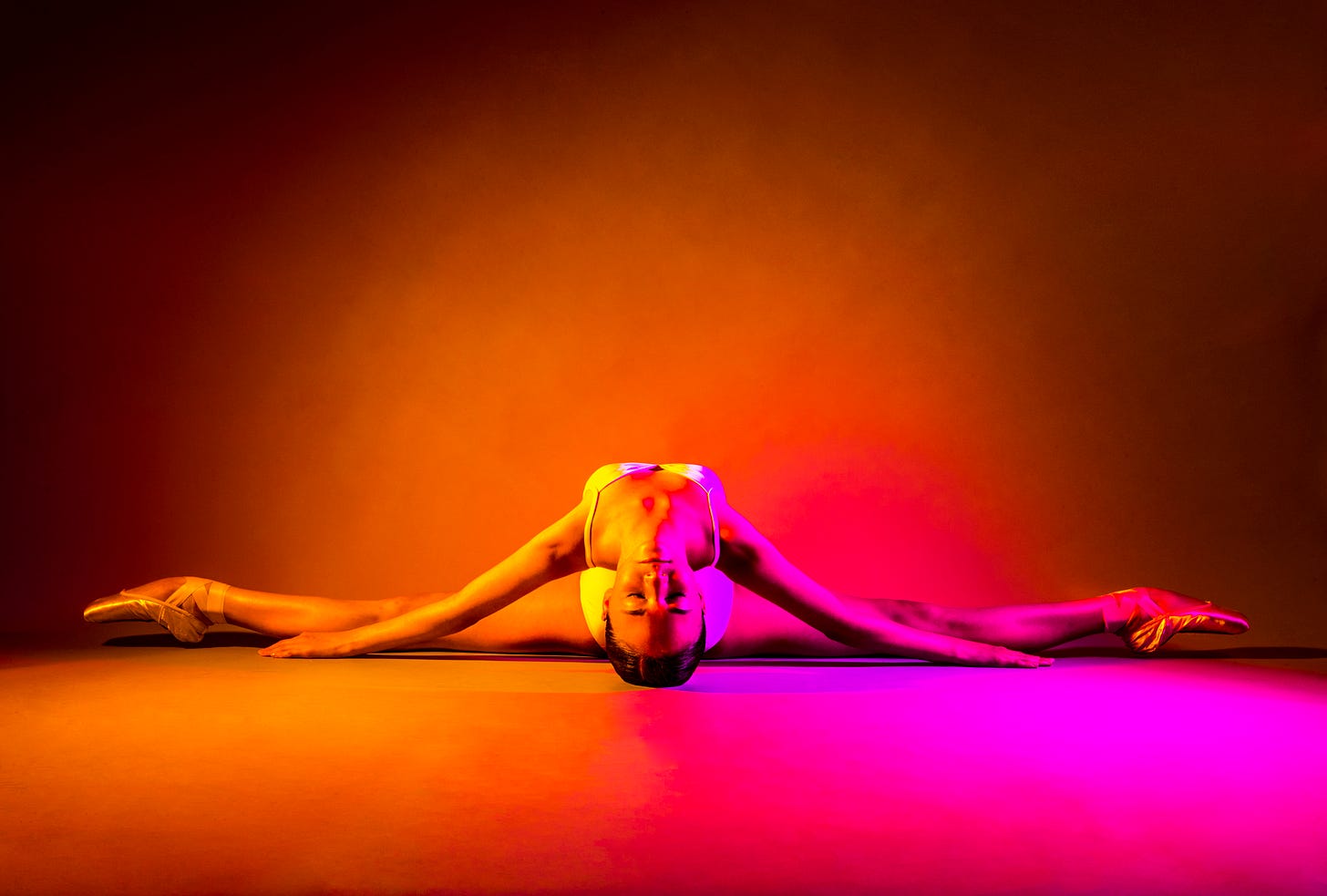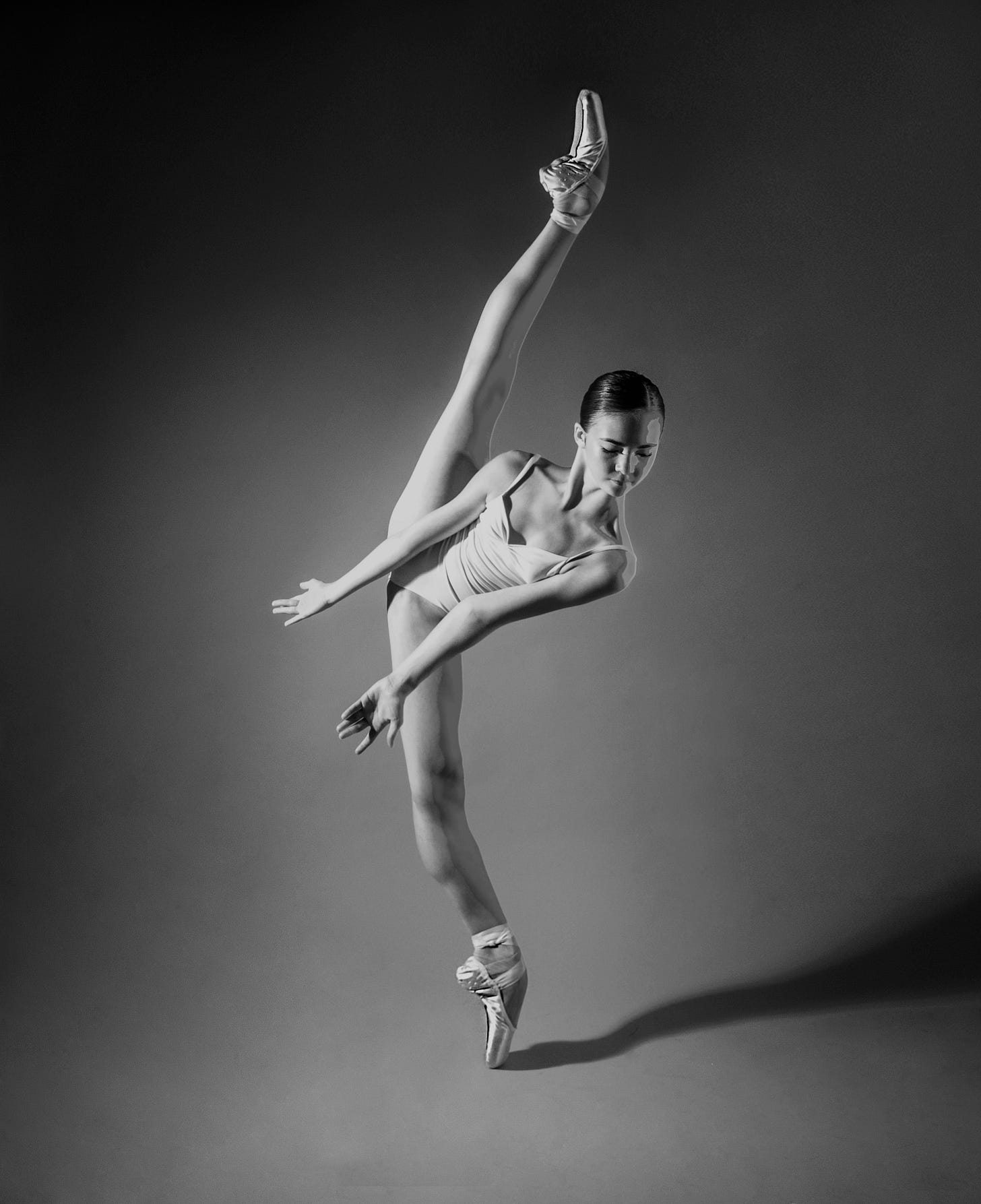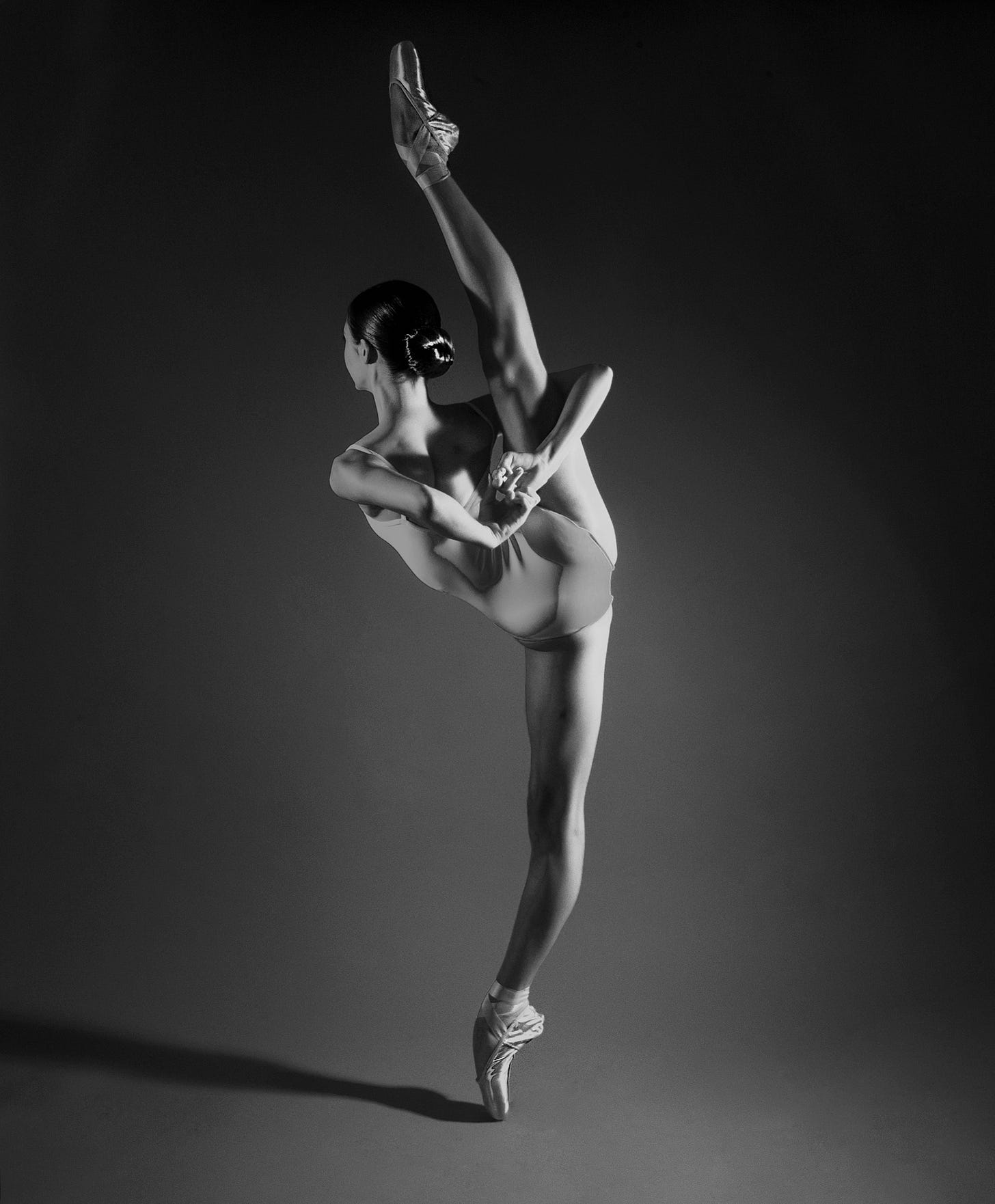Bending Boundaries: The Role of Joint Hypermobility in Dance
Exploring the Benefits, Challenges, and Health Strategies for Hypermobile Dancers
In this week’s Bendy Bulletin, we’re tackling an issue that has been ignored for far too long: the unrealistic demands placed on hypermobile dancers in both ballet and competition settings. The pressure to push through pain, ignore injuries, and prioritize perfection over well-being has been ingrained in dance culture for generations. But it doesn’t have to be this way. If we shift our approach to training, injury risk reduction, and recovery, we can create an environment where dancers not only thrive but also sustain long, fulfilling careers. This conversation is especially relevant to the Bendy Bodies community, where we explore how hypermobility impacts movement, health, and longevity—not just in dancers, but in anyone navigating life with a hypermobile body.
Let’s talk about what needs to change and how we can be part of that change.
The Impact of Joint Hypermobility in the Dance World
Dance is undeniably beautiful, but the reality behind the scenes often tells a different story. The culture has long celebrated perseverance at any cost, even when that cost is a dancer’s long-term health. Ignoring the body’s warning signs has become the norm, with many dancers believing that pain is just part of the process.
No dancer should have to wait until their body is breaking down to receive proper care. Yet, we continue to see promising careers cut short by chronic injuries and a system that equates rest with weakness. This isn’t a sustainable model. If dance is to continue to thrive, we must start prioritizing dancer longevity. The joy of movement should not come at the expense of physical and mental health.
The Reality of Injuries in Dance
Injuries are often considered inevitable in dance, but many can be prevented with proper education, training, and recovery. Stress fractures, tendonitis, muscle strains, and chronic pain are all too common, yet they’re often dismissed as part of the job.
The fear of being replaced or labeled as weak leads many dancers to ignore pain, which only worsens injuries over time. A dancer’s worth should not be measured by how quickly they recover or how many injuries they can dance through. The conversation needs to shift—injury prevention should be just as fundamental as technique. Dancers deserve access to physical therapy, sufficient recovery time, and mental health support as part of their training.
The Hidden Risk of Joint Hypermobility
One of the most overlooked risks in dance is joint hypermobility. Many dancers, especially elite ballet dancers, have hypermobile joints, allowing them to create stunning lines and extensions. But this flexibility comes with significant risks, including joint instability, ligament strain, and a heightened chance of long-term injury.
Dancers with hypermobility are often encouraged to push their limits, performing extreme extensions and “party tricks” that may look impressive but put excessive strain on their joints. Without proper strength training and stability work, these dancers are at a much higher risk for chronic pain and career-ending injuries.
Hypermobility can be an advantage but also requires special care. Dancers must focus on:
Joint stabilization and strength training to reduce joint instability
Proprioceptive exercises to improve awareness of joint position
Controlled, mindful stretching instead of passive overextension
Regular physical therapy and injury prevention work
Recognizing pain and taking it seriously
Sustainability: A Dancer’s Career Shouldn’t End in Their 20s
It’s heartbreaking to watch dancers feel like their careers are over before they even truly begin. Too many are forced into early retirement due to chronic injuries or burnout. But it doesn’t have to be this way.
Sustainability in dance means embracing recovery as part of the training process. It means shifting the focus from short-term perfection to long-term career longevity. Dancers should have the tools and support they need to stay healthy, both physically and mentally, so they can continue doing what they love for years to come.
How We Can Change the Industry
Creating a healthier, more sustainable dance world starts with all of us. Here’s how we can make a difference:
Prioritize dancer health: Dance companies, schools, and competitions must integrate physical therapy, recovery, and mental health support into training programs.
Make cross training mandatory: Pilates, Gyrotonics, Gyrokinesis, resistance training, and proprioceptive exercises improve joint stabilization and control.
Shift the competition culture: Stop glorifying overtraining and burnout. Encourage a supportive environment that values longevity over short-term success.
Invest in education: Dancers should be taught how to protect their bodies through strength training, recovery techniques, and injury prevention.
Challenge outdated norms: Rest days, cross-training, and recovery should be seen as essential components of training, not as signs of weakness.
Support bodily autonomy: Dancers should feel safe advocating for their own well-being without fear of losing opportunities or being labeled as difficult.
Advocate for systemic change: Leadership at dance companies and competitions must take a proactive role in prioritizing dancer well-being.
Let’s Reimagine Dance Together
Every one of us—dancers, teachers, choreographers, directors, and even audience members—has a role to play in transforming dance culture. A world where dancers can sustain their careers and thrive is possible if we start making these changes now.
Dancers: Listen to your body and speak up for your well-being.
Teachers & Directors: Build rest and recovery into training to support dancer health.
Dance Fans & Supporters: Help spread the message and push for change.
It’s time for the dance world to evolve. Let’s build a future where health and artistry go hand in hand.
Bendy Bodies Podcast & Community
For those looking to dive deeper into the effects of hypermobility on movement and health, check out the Bendy Bodies Podcast, where we explore these topics with experts in the field. The Bendy Bodies community is here to provide education, resources, and support for those navigating the challenges of hypermobility.
It’s time for the dance world to evolve. Let’s build a future where health and artistry go hand in hand.
Your Ultimate Appointment Checklist:
We’ve created your Ultimate Appointment Checklist! Save it for your next appointment and go in prepared with the right documents, records, and questions.
Resiliencey Radio with Dr. Jill Carnahan
I was recently a guest on Resiliency Radio (Episode 224). Dr. Jill Carnahan and I provide a comprehensive overview of joint hypermobility, including its association with conditions like Postural Orthostatic Tachycardia Syndrome (POTS) and Mast Cell Activation Syndrome (MCAS). Understanding these connections can be pivotal in managing symptoms and improving overall quality of life!
Last Thursday, February 20th: Episode 133 with Dr. Matthew Watto
We are so lucky to have just hosted Dr. Matthew Watto, co-founder of The Curbsiders and an internist who understands the importance of shared decision-making in healthcare. He breaks down the red flags that signal it might be time to find a new doctor—and why trust and genuine care should never be negotiable. Whether you’re navigating a complex condition like Ehlers-Danlos Syndromes, dysautonomia, POTS, or Mast Cell Activation Syndrome, or simply want better healthcare, this conversation will help you advocate for the quality care you deserve.
This Thursday, February 27th: Episode 134 with Dr. Kara Wada
In just a few days, we are excited to welcome back Dr. Kara Wada, a board-certified pediatric and adult allergy, immunology and lifestyle medicine physician. Dr. Wada is also a certified-life coach. You’ll leave this episode feeling immune confident!
Well that’s all for this week; thank you so much for reading and supporting this newsletter. Talk to you soon, Bendy Buddies!
Yours in Health,
Dr. Bluestein













This was such an interesting read! I think it’s super, super important and I love a lot of what you mentioned at the end for changes to come.
I danced a long time ago and though I wasn’t competitive, I went multiple times a week every week growing up for classes. When it got close to the time around where I stopped, I was getting ready to have some personal changes (I.e. new school). But not that long after me there, started my first journey with a bizzare knee issue that I now know was probably EDS related.
I say all this to ask- do you think dancing or any sport/activity that favors hypermobility can play a role in “holding things together” if you will? I was active outside of dance but it was definitely one of my main sources of movement/exercise.
I agree, this is key information. It was only when my daughter's dance injury wouldn't heal that it prompted a journey toward an EDS diagnosis that everyone started to realize it wasn't something she could push through or that she was being timid or afraid. There is so much opportunity for those that interact with our dancers almost daily to be both aware of EDS and to help them support their bodies and their long term health.